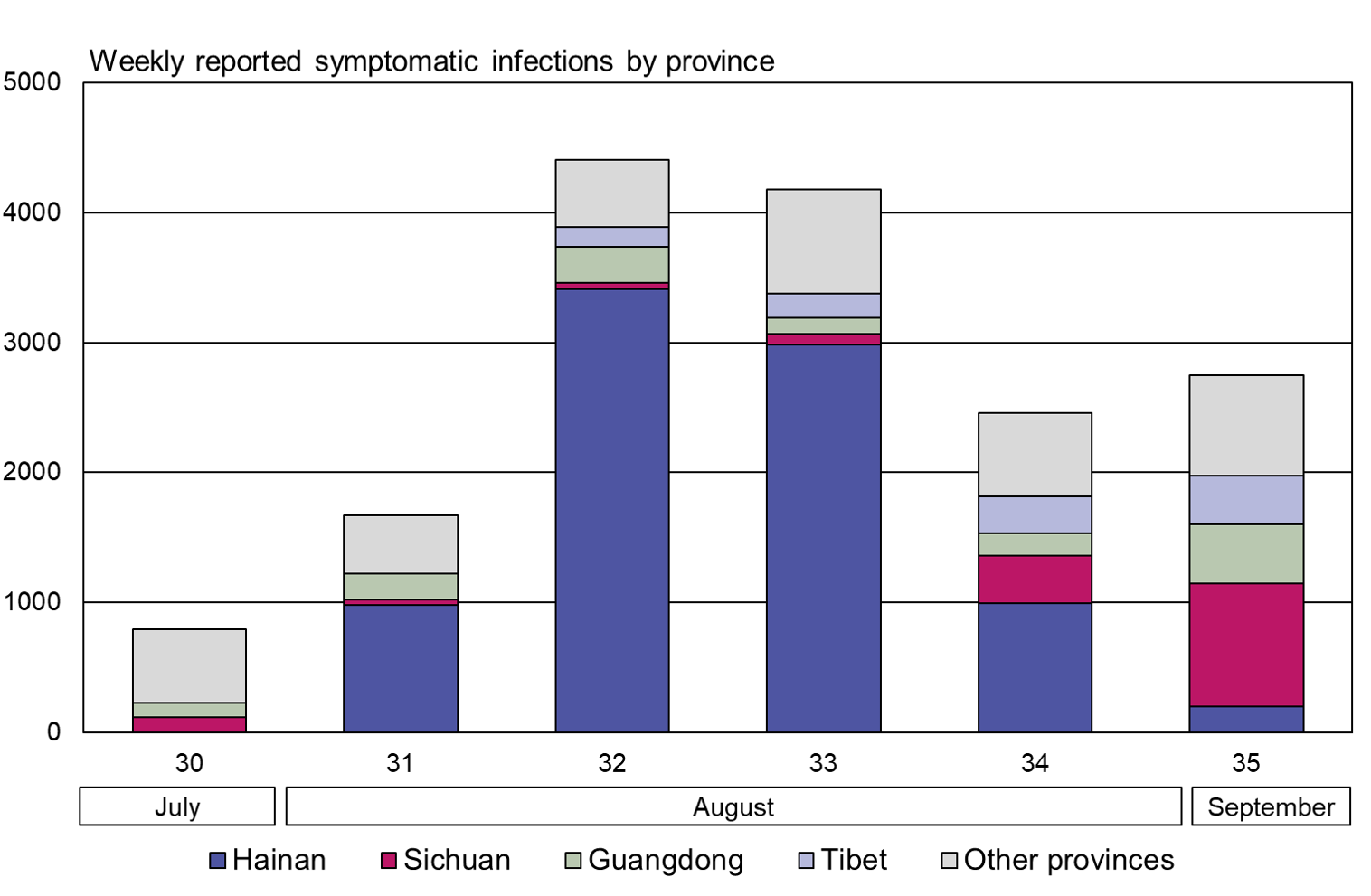BOFIT Weekly Review 36/2022
Covid hotspots strain China’s provincial economies
While covid case numbers in mainland China have remained modest by international standards in recent months, regional lockdowns and clusters of infections have been on the rise in recent weeks. Several major cities were put into lockdown last month, and the situation has worsened lately. Covid rules still complicate travel within China and have interfered with the start of schools this autumn. Nevertheless, China has not wavered from its “zero covid” policy, and the negative economic effects from rolling lockdowns are expected to continue.
Sichuan province seems to be getting the worst of it at the moment. The 21 million residents of Chengdu, the provincial capital, have been ordered to stay in their homes. No end date has been announced for the end of the lockdown in Chengdu, the largest Chinese city to face a lockdown since Shanghai in May. Additionally the province suffered a 6.8 magnitude earthquake this week. Chengdu residents were unhappy with covid policies that forbid them from leaving their residential areas even during the earthquake.
Hainan Island, where covid cases began to rise in early August, has also become a cluster of infections. As the island is a top travel destination for mainland Chinese, the measures put in place left thousands of tourists stranded. To deal with the situation, Hainan’s local government ordered hotels to offer stuck tourists a 50 % discount on their room rates. The Hainan case highlights the covid-era risks of domestic tourism and may partly explain why domestic tourism has yet the recover to pre-pandemic levels. China’s three-day Mid-Autumn Festival, which kicks off tomorrow (Sept. 10), is expected to increase domestic travel significantly this weekend.
Several other provinces have witnessed local lockdowns and infection outbreaks. Last month, Tibet and Xinjiang reported infection chains that likely originated with domestic tourists. The number of infections in Guangdong province continues to rise, and two of China’s biggest cities, Shenzhen and Guangzhou, have imposed restrictions on certain city districts. Many universities have also prohibited students starting the autumn semester from leaving campus.
China’s covid infections were highest in Hainan province in August. This month has seen rising infection rates in Sichuan and Guangdong provinces.

Sources: China Center for Disease Control and Prevention, CEIC and BOFIT.